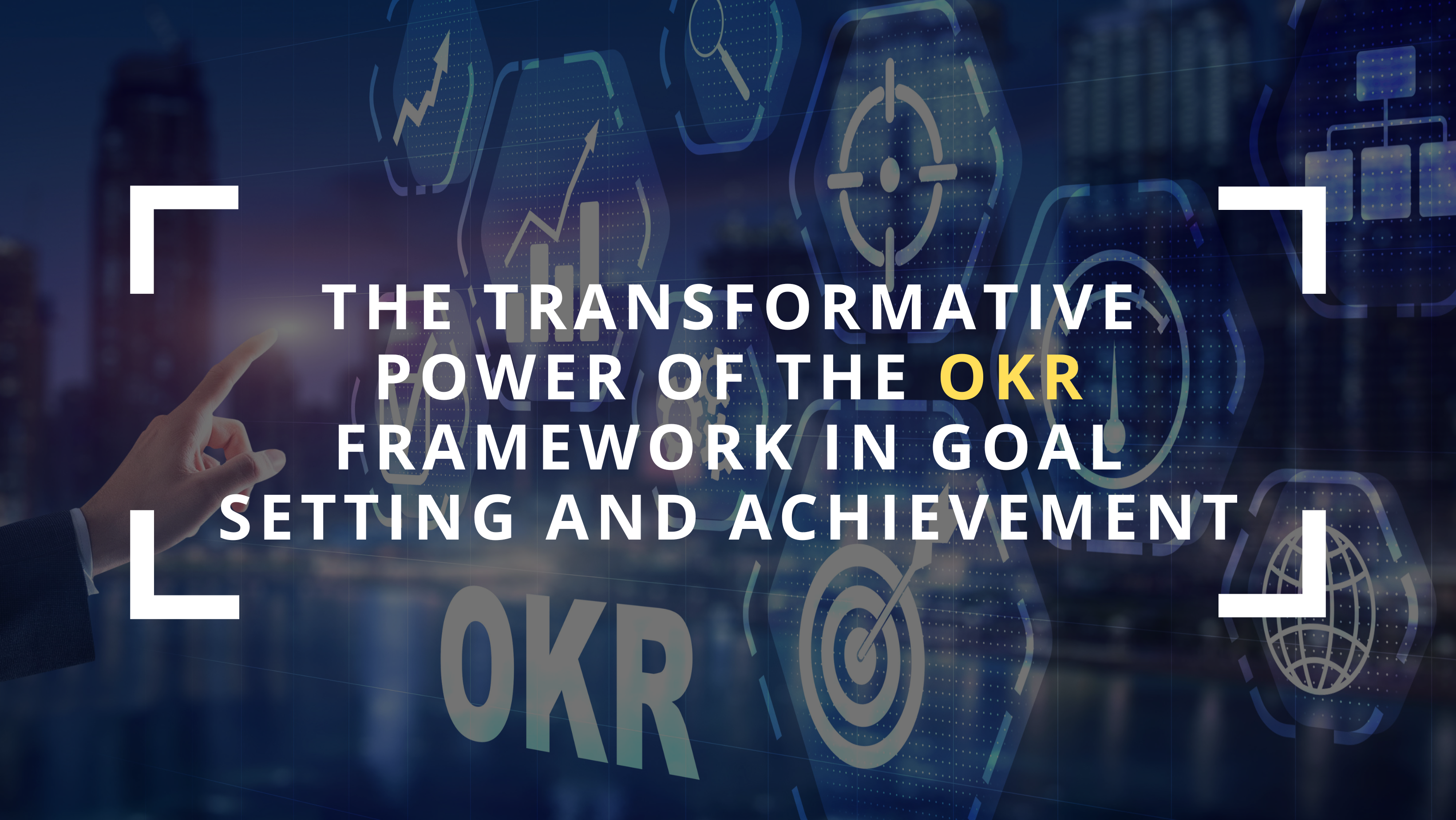Unlocking Success: The Transformative Power of the OKR Framework in Goal Setting and Achievement
28. Feb 2021 — Shawn Maholick
Strategic goal setting is the cornerstone of successful businesses and thriving employees. At the heart of this strategic approach is the Objectives and Key Results (OKR) Framework, a powerful tool that offers clarity, alignment, and motivation. In an era defined by ambitious targets and rapid growth, OKR emerges as an indispensable methodology for organizational and personal excellence. Let's delve into how the OKR Framework revolutionizes goal management and drives effective execution.
Understanding the OKR Framework
Developed by Intel in 1968 and later popularized by tech giants like Google, OKR is a goal management system that aligns individual and team initiatives with broader company objectives. It's a unified process that involves setting specific, ambitious goals (Objectives) and pairing them with measurable benchmarks (Key Results) to gauge progress. Moreover, Initiatives outline the actions and projects needed to affect these Key Results.
The OKR Cycle: A Continuous Improvement Loop The OKR process flourishes through a repeating sequence of planning, execution, and evaluation:
Organizational OKR Planning: Establishing objectives and key results with employee collaboration, ensuring buy-in and relevance.
Update Meetings: Regularly scheduled sessions to assess initiatives and progress using defined indicators.
Cycle-end Review: Evaluating achievements at the close of an OKR period, celebrating successes, and learning from shortcomings.
Reassessment: Enhancing the OKR strategy based on insights and preparing for the subsequent cycle.
Key Benefits of OKR Implementation
The vitality and success of any organization lie in its ability to set and achieve goals that push the company forward. The adoption of the OKR Framework can act as a catalyst for this success, offering numerous benefits that fundamentally transform the approach to goal management.
Enhanced Focus: Efficiency in an organization starts with distinguishing what matters most. By honing in on three to five strategic objectives, the OKR framework helps eliminate distractions, allowing employees to channel their efforts where they will have the most significant impact.
Strategic Alignment: Siloed efforts can undermine a company's success. The beauty of OKRs lies in the seamless alignment they create, linking individual contributions with departmental goals and, ultimately, the overarching vision of the company. This synergy ensures that every team member is rowing in unison toward shared success.
Measurable Progress: Progress can feel intangible without measurable benchmarks. Key Results act as signposts along the journey toward each objective, providing a quantifiable means of tracking advancement and maintaining momentum. This transparency in measurement fosters an environment where successes are recognized, and obstacles are swiftly addressed.
Employee Engagement: Knowing how one's work contributes to the larger picture is a powerful motivator. The OKR framework places emphasis on regular feedback and acknowledgment, reinforcing individual commitment to the company's goals. Engaged employees are the bedrock of a vibrant workplace, fueling innovation and driving growth.

Practical Steps to Implementing OKR
The integration of the OKR framework into an organization's culture is a strategic initiative that requires careful planning, ongoing commitment, and focused execution. Here's how businesses can practically approach implementing OKRs:
Zone Identification: The first step involves an introspective look at the company to determine areas needing enhancement. This preliminary analysis should consider existing strategic plans, long-term goals, and production capabilities to pinpoint where the OKR process can most effectively be applied for immediate impact and long-term improvement.
Defining Objectives: Collaborating directly with teams, leadership should facilitate brainstorming sessions that tap into the collective intelligence of the organization. Inputs from these sessions help formulate objectives that are not just top-down mandates but co-created targets that resonate with employees across all levels.
Crafting Key Results: Once objectives are set, clearly defining three to four key results for each ensures all efforts are measurable and outcome-oriented. The act of transforming abstract aspirations into concrete criteria provides a roadmap that guides employees in their daily activities and priorities.
Engaging and Reviewing: To foster buy-in, it's essential to discuss OKRs openly with staff. These discussions allow for the adjustment of goals based on feedback and help employees grasp what is expected of them. A dynamic review process encourages adaptability—a crucial trait for businesses operating in ever-changing markets.
Tracking Progress: With OKRs in place, the real-time monitoring begins. Leveraging technology and setting up systematic check-ins can aid in keeping track of progress, a process that informs decision-making and keeps the entire organization aligned and focused on common goals.
By thoroughly understanding and implementing the OKR Framework, organizations stand to gain not just in terms of goal achievement, but also by creating a culture steeped in clarity, accountability, and engagement—qualities that are essential for sustained success in the modern business landscape.

Conclusion
In conclusion, the OKR Framework is a beacon of guidance in the complex journey of achieving strategic objectives. With its outcome-focused philosophy and emphasis on measurable results, OKR empowers organizations of all sizes to fine-tune their trajectory towards triumph. By incorporating this growth framework and cultivating a cyclic pattern of planning, monitoring, and evaluating, businesses ensure not only the realization of ambitious visions but also the sustainable engagement and satisfaction of their most valuable assets—their employees.
